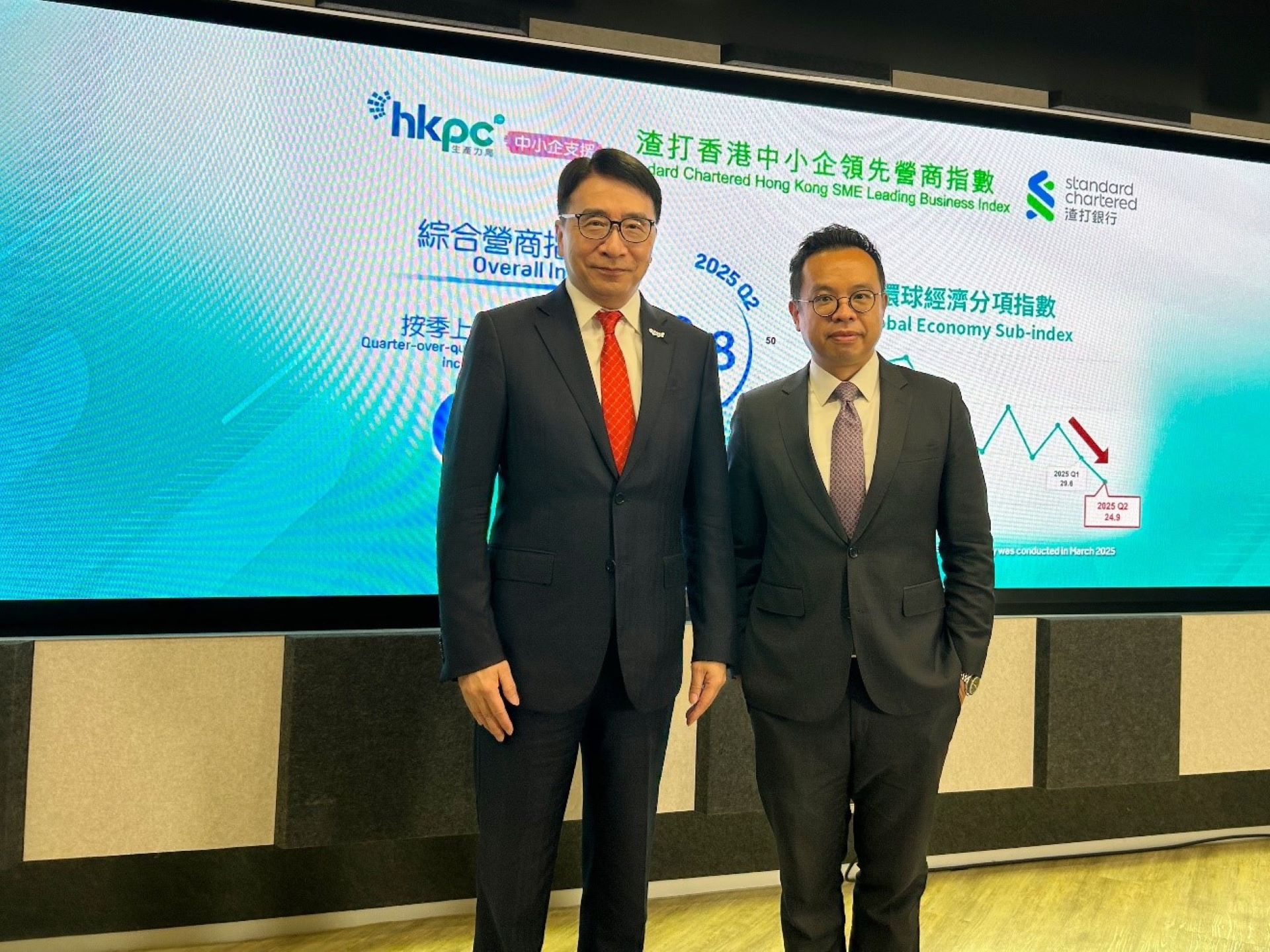
Many small and medium-sized enterprises in Hong Kong plan to mitigate the impact of global economic uncertainties by deepening their presence in the local market and setting up online sales channels.
This strategy comes as business sentiment among the SMEs is projected to remain cautious in the second quarter of 2025, according to the Standard Chartered Hong Kong SME Leading Business Index released by the Hong Kong Productivity Council on Tuesday.
Compiled to reflect local SMEs’ confidence in the business environment, the index recorded a score of 43.8 for the second quarter, an increase of 1 point from the previous quarter.
ALSO READ: 90% of Hong Kong SMEs commit to investment in Q1
Nearly 80 percent of surveyed SMEs said they have development plans for the coming year to manage risks caused by the United States’ tariff hikes. Almost half of them said they will expand their local customer base, while more than a quarter aim to boost their use of artificial intelligence and digital applications in operations. They are also looking to allocate more resources to explore new markets and establish online sales channels.
Moreover, 94 percent of the companies surveyed reported plans to maintain or increase their investments this quarter in areas including online market promotion and training related to e-commerce or digital technology.
Lawrence Cheung Chi-chong, chief technology officer of the HKPC, said this investment trend reflects local businesses’ preference to recalibrate their target markets and clientele as they consider e-commerce and digitalization measures to be cost-effective ways to reach more customers amid trade tensions.
The survey polled 817 local SMEs in March when US President Donald Trump’s tariff actions were already underway.
ALSO READ: HK SMEs display confidence amid tariff concerns
It showed that nearly 30 percent of enterprises were considering expanding their operations to other regions within the next three years, an increase of 7 percentage points from the first quarter. The Chinese mainland and Association of Southeast Asian Nations markets are expected to be the main targets for expansion.
Among the five categories of the index, “business condition” and “profit margin” saw the largest improvements, while “global economy” suffered the steepest decline, dropping 4.7 points to 24.9 — the lowest level since the second quarter of 2022.
Sectors such as import/export trade and wholesale, manufacturing, as well as professional and business services reported the largest drops in confidence in the “global economy” category, with their indices falling around 8 points each.
Despite the negative outlook regarding the global economy, overall confidence among Hong Kong’s SMEs still showed an increase in the second quarter, which suggested that “they weathered a deterioration in external economic conditions”, said Kelvin Lau, senior economist for Greater China and North Asia at Standard Chartered.
READ MORE: Hong Kong’s pivotal role in global trade reaffirmed amid headwinds
He said, the rebound in the subindexes for “business condition” and “profit margin” offset the decline in the “global economy”.
But, Lau noted “more worrying is the continued underperformance of some of more domestic-oriented sectors, including retail and construction”. He said, “This is a reminder that they are not ready to take up the slack from an impending export slowdown.”


